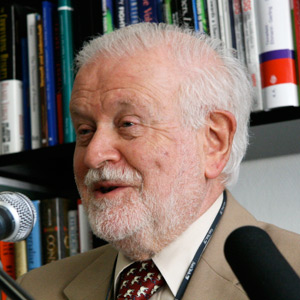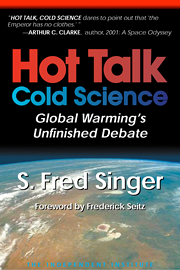Geo-engineering has become a buzzword again, thanks to a recent two-volume report of the US National Academy of Sciences/National Research Council [NAS-NRC 2015; http://bit.ly/EOSNRC]. Driven by exaggerated concerns about greenhouse (GH) warming catastrophes, the reports pursued mainly two project ideas:
- Reducing atmospheric levels of the GH-gas CO2, starting with fairly innocuous schemes like planting tree farms to fertilizing the Southern Oceans by adding missing micro-nutrients (an idea much favored by the late oceanographer Roger Revelle)—all the way to full-scale engineering proposals that involve the direct removal of ambient CO2, with subsequent underground sequestration—a vastly more expensive undertaking of dubious technical feasibility.
- The other favored approach would try to increase Earth’s albedo to reduce the amounts of solar energy reaching the surface. In analogy with volcanic eruptions, reflective aerosols would be injected into the stratosphere—a costly and unproven scheme, likely to constitute an environmental hazard to stratospheric ozone.
It is doubtful that either project will gain approval—beyond further studies and some feasibility tests. Costs and risks are too high, and they may not even be needed. Yet geo-engineering seems to make perfect sense when used to overcome a sure-to-arise ice-age glaciation.
Paleo-Climate
Earth has been cooling for about 65 million years (ma) and has experienced a series of some 20 glaciations (“ice ages”) for the most recent 2-3 ma (“Quaternary”). Ice-core data indicate a typical duration for each glaciation of 41,000 and then 100,000 years—with a gradual onset, but with a sudden termination into a warm Interglacial period of typical duration of 10,000 years. [Imbrie, Science 1976; Ice Ages, 1986]
Our present Interglacial, the Holocene period, has now lasted over 11,000 years and (some think) may soon end, making way for the next ice age. (Some calculations [by A. Berger], however, suggest that the Holocene may last much longer than 10,000 years.) According to the “astronomical theory” of Milankovitch, the timing of these cycles is controlled by changes in the Earth’s orbit eccentricity, inclination of the spin axis, and its precession. Although Milankovitch provides a useful guide on timing, there is still much research required to understand the full physics of the glaciations [Roe, GeophysResLett 2006].
The timing of these cycles
According to theoretical speculation, the onset of glaciation is caused by a positive feedback at a sensitive “tipping point.” Judiciously planned intervention there might destroy this positive feedback and thereby delay or even cancel an ice-age cycle. It is widely believed that a glaciation initiates when a high-latitude (at about 65 degN) snowfield survives during summer and then expands year-by-year as a result. [The initiation may occur stochastically during a (cold) sunspot minimum or after a major volcanic eruption.] Weather satellites provide a ready means for digitally identifying and tracking such critical snowfields. They can then be controlled or removed by the deposition of solar-energy-absorbing soot.
In any case, ice ages impose severe stresses on human populations and on the ecology. During the most recent ice age, some 20,000 years ago, mile-thick ice sheets covered much of North America and all of northern Europe. Global sea levels were 120 meters lower than today. The English Channel was a huge river, draining the Rhine, Maas, Thames, and the melt water from the ice sheets, into the Bay of Biscayne.
In addition to the ice ages, less severe coolings and warmings have occurred on an irregular, 1500-year cycle (the so-called Dansgaard-Oeschger-Bond cycles) [see Singer & Avery, Unstoppable Global Warming, 2007]. Their likely cause is solar variability [according to Bond, Science 2001]. The most recent events include the Medieval Warm Period (around 1000 AD), the Little Ice Age, and the Modern Warming that started around 1850 AD [Loehle & Singer, Can J Earth Sci 2010]. Historic records, gathered mainly from European data, indicate that the cold periods had severe economic impacts, causing failed harvests and widespread starvation and disease [Lamb, Climate, 1972]. In his forthcoming book “Climate & Collapse: The Secret of Human Sustainability,” my colleague Dennis Avery, an agricultural economist and historian, has greatly elaborated on these themes of climatology pioneer Lamb.
There is little that can be done to mitigate the 1500-year cycles, if indeed they are controlled by solar activity. Here, adaptation may provide the only means of dealing with the disastrous effects of the cold periods. Research should be directed to discovering the best methods of countering the damaging impacts of cooling on human populations.
The Last Glacial Maximum (LGM) occurred about 18,000 years ago, with the Great Lakes a remnant of this recent glaciation. A wide swath of land south of the ice was treeless tundra, unsuitable for agriculture. The human population was small but survived. [See Van Alden and Davis, Neanderthals and Humans in the European Landscape during the Last Glaciation, Cambridge Press, McDonnell Institute monograph. Also: Soares et al, Climate Change and Postglacial Human Dispersal in Southeast Asia, Molecular Biology and Evolution 25, 2008; as well as other references cited by Avery].
The onset of the next glaciation, another ice age, is widely expected. It would spell a severe test for humanity but would probably not terminate human existence on the planet. It would not match the ultimate catastrophe, the impact of a large asteroid, such as occurred 65 million years ago at the beginning of the Tertiary, which wiped out the dinosaurs.
The survival of the human race depends very much on advanced technology. This is especially the case for climate change. Good-quality agricultural land will be limited; but hothouse yields could be high. An efficient distribution system could alleviate the threat of starvation for a reduced population. Nuclear energy, based on uranium/thorium fission and on fusion reactors, may provide the mainstay of civilization. We may well be living underground, but not necessarily in caves.
An international cooperative project to stop ice ages
I can visualize a possible international collaboration that might involve three teams in North America, Europe, and Asia, working independently and using their own satellite systems—but coordinating their efforts under WMO (World Meteorological Organization) auspices. The satellites, using simple TV cameras, could keep track of any long-term growth in surface albedo from snow and ice; an averaging interval might be 3-10 years.
Once such secular growth has been detected, each of the three teams would carry out a plan to stop such growth. Though operating independently, they might consult widely on the best techniques for generating and depositing soot and for keeping track of albedo changes.
The aim, of course, is to break the positive feedback cycle that presumably leads to the growth of an ice-age glaciation. One can think of various practical problems that could arise; yet none of them seem insurmountable or particularly costly. But a test would certainly be worthwhile.
Stopping the next ice age appears to be well within our technical capability and carries a huge benefit-to-cost ratio. An investment of millions would prevent the loss of trillions of dollars.









